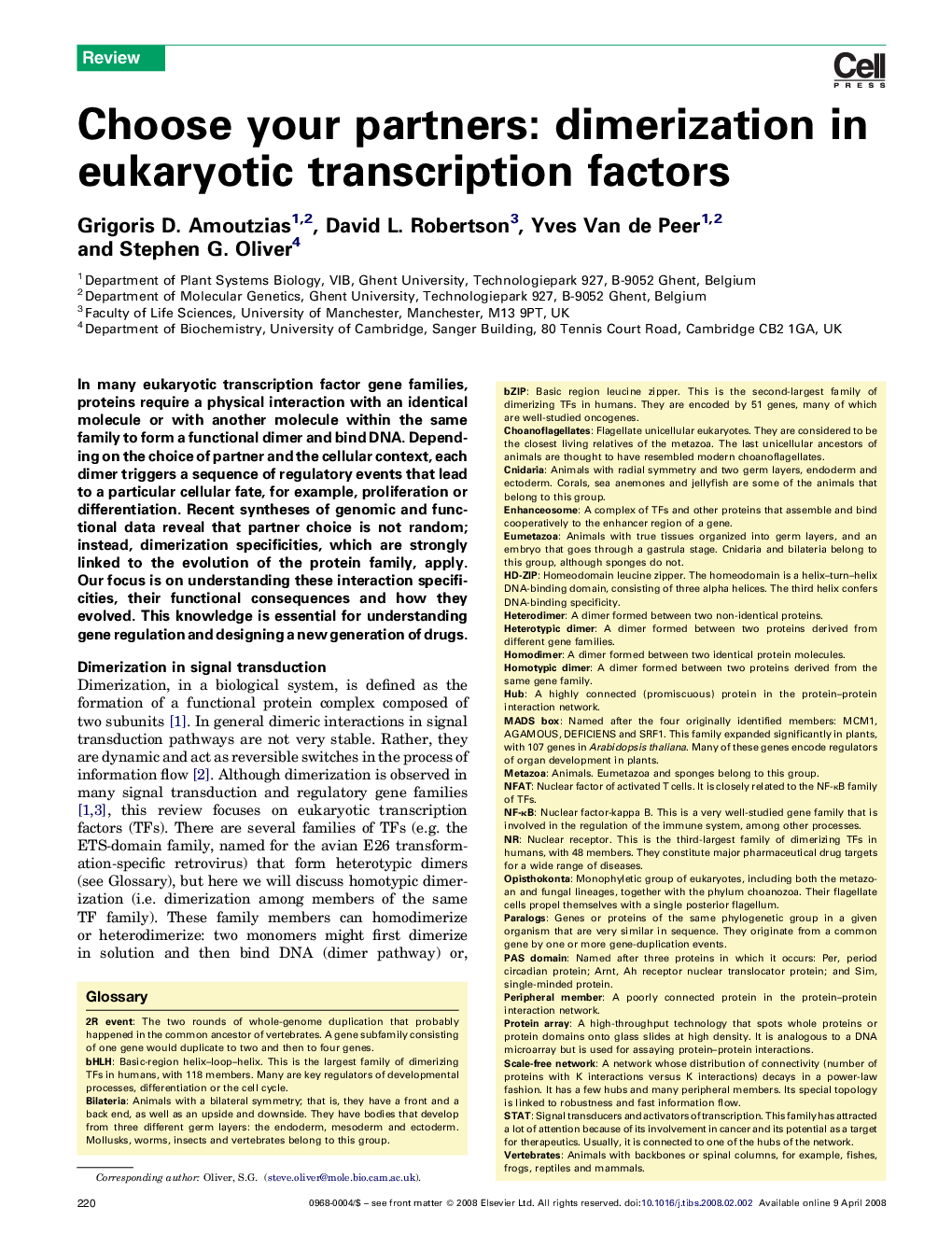| Article ID | Journal | Published Year | Pages | File Type |
|---|---|---|---|---|
| 2031763 | Trends in Biochemical Sciences | 2008 | 10 Pages |
In many eukaryotic transcription factor gene families, proteins require a physical interaction with an identical molecule or with another molecule within the same family to form a functional dimer and bind DNA. Depending on the choice of partner and the cellular context, each dimer triggers a sequence of regulatory events that lead to a particular cellular fate, for example, proliferation or differentiation. Recent syntheses of genomic and functional data reveal that partner choice is not random; instead, dimerization specificities, which are strongly linked to the evolution of the protein family, apply. Our focus is on understanding these interaction specificities, their functional consequences and how they evolved. This knowledge is essential for understanding gene regulation and designing a new generation of drugs.
